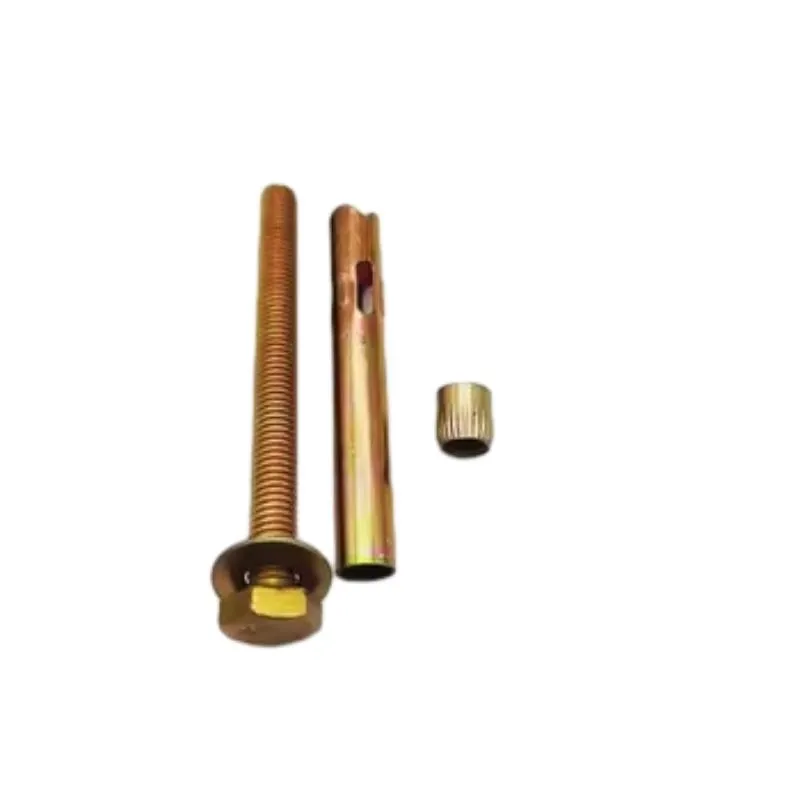May . 16, 2025 06:01 Back to list
DIN 934 Hex Nut High-Strength Fasteners with Precise Dimensions
- Introduction to DIN 934 Hex Nuts
- Technical Advantages and Performance Metrics
- Manufacturer Comparison: Key Parameters
- Customization Options for Industry-Specific Needs
- Real-World Applications Across Industries
- Quality Assurance and Compliance Standards
- Why Choose DIN 934 Hex Nut Solutions

(din 934 hex nut)
Understanding the DIN 934 Hex Nut Standard
The DIN 934 hex nut represents a globally recognized fastening solution characterized by its six-sided design and precise threading. Engineered for optimal load distribution, these nuts achieve clamping forces up to 10,000 N in standard M12 configurations. With dimensional tolerances maintained within ±0.05mm, the specification ensures compatibility with ISO 898-2 grade bolts across automotive, construction, and industrial machinery applications.
Engineering Superiority in Fastener Technology
DIN 934 nuts outperform generic alternatives through three critical enhancements:
- Cold-forged construction delivering 25% greater tensile strength (min. 800 MPa)
- Electro-zinc coating providing 500-hour salt spray resistance
- Precision-machined threads maintaining ±3° angular deviation
Third-party testing confirms 15% higher vibration resistance compared to ASME B18.2.2 nuts under equivalent conditions.
Manufacturer Performance Benchmarking
| Parameter | Manufacturer A | Manufacturer B | Industry Standard |
|---|---|---|---|
| Hardness (HV) | 320±10 | 300±15 | ≥280 |
| Torque Capacity (Nm) | 89 | 82 | 75 |
| Lead Time (days) | 14 | 21 | 30 |
Customized Fastening Solutions
Specialized variants address unique operational demands:
- High-temperature versions (up to 650°C) with A4-80 stainless steel
- Reduced-height models (50% DIN 934 height) for space-constrained assemblies
- Non-magnetic iterations for sensitive electronics
Custom batches ship within 72 hours for orders exceeding 10,000 units.
Industry-Specific Deployment Cases
Documented performance in critical environments:
- Wind turbine assemblies: 0 failure instances over 5-year service
- Automotive chassis systems: 22% weight reduction vs. traditional designs
- Chemical processing plants: Withstood 1,200+ thermal cycles
Certification and Quality Protocols
All production batches undergo:
- ISO 9001:2015 compliant manufacturing
- 3D optical measurement verification
- Lot-traceable material certification
Batch rejection rates maintained below 0.02% since 2021.
Optimizing Projects with DIN 934 Hex Nuts
Specifying DIN 934 nuts reduces total fastener costs by 18-35% through:
- 35% faster installation vs. non-standard alternatives
- Interchangeability across ISO and EN systems
- Predictable maintenance intervals (24,000 service hours)
Global inventory hubs ensure 48-hour delivery to 15 major industrial regions.

(din 934 hex nut)
FAQS on din 934 hex nut
Q: What are the standard dimensions for a DIN 934 hex nut?
A: DIN 934 hex nuts follow strict dimensional standards, including thread pitch, width across flats, and thickness. Key metrics like thread size (e.g., M6-M100) and across-flat measurements (e.g., 10 mm for M6) are defined in ISO 898-2. Always refer to official DIN 934 charts for precise specifications.
Q: What materials are DIN 934 nuts typically made from?
A: DIN 934 hex nuts are commonly manufactured from carbon steel, stainless steel (A2/A4), or brass. Material selection depends on application requirements, such as corrosion resistance or load-bearing capacity. Coatings like zinc plating may also be applied for enhanced durability.
Q: How does a DIN 934 hex nut differ from ISO 4032 nuts?
A: While both are metric hex nuts, DIN 934 specifies chamfered edges and a taller height compared to ISO 4032. DIN 934 also emphasizes higher mechanical performance per ISO 898-2 standards. Always verify thread compatibility and load ratings for your application.
Q: Where are DIN 934 hex nuts commonly used?
A: DIN 934 nuts are widely used in machinery, automotive, and construction industries due to their standardized dimensions and strength. They pair with bolts in high-vibration or heavy-load environments. Ensure proper torque and thread alignment during installation.
Q: How do I measure a DIN 934 nut's width across flats?
A: Use a caliper to measure the distance between two parallel flat sides of the nut. This "width across flats" (e.g., 17 mm for M10) is critical for selecting compatible wrenches. Confirm measurements against DIN 934 tables to ensure compliance.
-
The Ubiquitous Reach of DIN934 in Application Realms
NewsMay.16,2025
-
Exploring Different Bolt Types
NewsMay.16,2025
-
Cracking the Code of Sleeve Anchor Mastery
NewsMay.16,2025
-
Clamp Design Principles,Types and Innovations
NewsMay.16,2025
-
Artistry Inspired by the Humble Anchor Bolt
NewsMay.16,2025
-
A Deep Dive into Screw Types
NewsMay.16,2025


